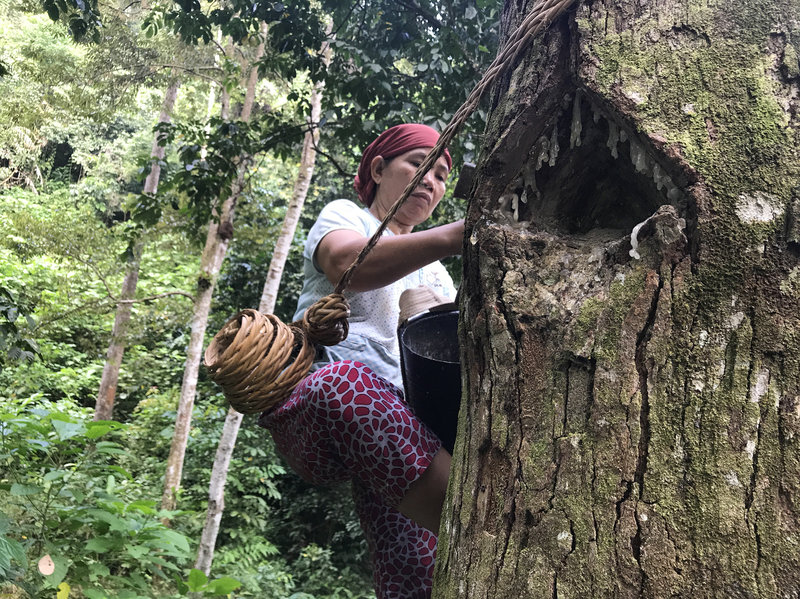In a recent segment of All Things Considered, NPR contributor and 2010-11 Luce Scholar Julia Simon investigates how the cultivation of damar trees in South Sumatra provides a model for reducing large-scale deforestation—a major contributor to climate change—by providing farmers with an incentive not to cut down their trees. Fellow Luce Scholar David Gilbert, a researcher in environmental anthropology at the University of California, Berkeley, contributes his expertise.
Damar isn’t a global household-name, but in Sumatra it goes way back. In the 1800s, Dutch colonists used the sap to bind their wood boats for sea journeys. Today damar is used in varnishes, paints, and cosmetics. According to the UN, Indonesia exports tens of thousands of tons of damar and other resins each year.
But compared to Indonesia’s monthly exports of palm oil, that’s not so whopping. According to the Indonesian Palm Oil Organization, or GAPKI, Indonesia exports about 2 to 3 million tons of palm oil per month.
And those palm oil exports come at a cost: large-scale deforestation of Indonesian forest, which in turn releases large amounts of climate change gases and destroys habitats for animals like endangered rhinos and orangutans. Last year, the Indonesian government stopped issuing licenses for new palm oil plantations and the European Union is now considering an import ban.
But there’s an issue.
Last month Thomas Hertel, a professor of agricultural economics at Purdue University, co-authored a paper in the Proceedings of the National Academy of Sciences. He argued that even if the EU ban comes to pass, and even if it successfully reduces the trade of palm oil, local farmers aren’t just going to automatically keep the forests in place.
“Even if the import ban bites, it may not do the job,” Hertel says.
Hertel says that farmers might stop planting palm oil, but they might keep cutting down forests to plant other commodities, like soy or rice. “If you focus on certifying one crop, they switch to another crop. The incentive for deforestation will still be there,” Hertel says.
That’s where damar comes in. Back in Krui, farmer Kamas Usman says he grows damar in something called an agroforest. It may look like a regular forest, but it’s actually an intricately planned farm.
“In this agroforest there are lots of varieties of trees. Durian, jengkol, lots of them,” Usman says. The farmers plant food crops below — Southeast Asian fruits like durian and jengkol, as well as avocados or coffee. Above in the canopy are the damar trees — also called Shorea javanica — which produce the golden sap. “That’s how it becomes not just a forest, but a damar forest,” he says.





